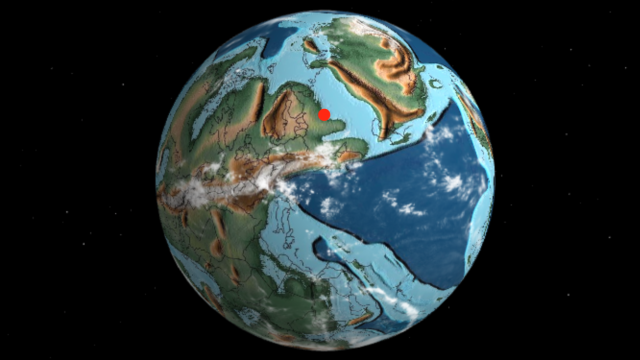A mammoth find near Mexico City

RODRIGO ARANGUA/AFP via Getty Images
A team of scientists has discovered the largest collection to date of mammoth skeletons in one place, just outside Mexico City. The researchers have counted more than 200 individual mammoths to date—and believe there are still more to discover.
In 2018, the government announced the development of a new Mexico City airport at the Santa Lucía Air Force Base, north of the city. People have found mammoth remains in the northern part of the city and the wider region since the 1970s. So, Pedro Francisco Sánchez Nava, the national coordinator of archaeology of the National Institute of Anthropology and History, anticipated he and his colleagues would find more of these Pleistocene-era fauna in the area.
“We never assumed that there was going to be the quantity that we are looking at now,” says Sánchez. Just a few months ago, the team had identified 60 specimens. In September, the researchers confirmed counting more than 200 individuals. This find beats previous record-breaking collections of mammoths in California, South Dakota, and Siberia.
The remains date between 20,000 and 10,000 years in age. Sánchez remarks that these bones are not the product of a single event but the accumulation of some 10,000 years of mammoth presence in the region. “These huge animals required a large amount of food; the [nearby] lakeshore had a high concentration of plant species, so many were trapped in the mud by their own weight while they were eating,” Sánchez says.
Archaeologist Rubén Manzanilla López, the head of the Santa Lucía archaeological salvage project, knows that the findings are a milestone in paleontology and Ice Age archaeology. “None of us imagined that we would find this amount of mammoths,” Manzanilla says. “We knew that there were megafauna remains in the area—but not of that magnitude.”
To date, Manzanilla’s team of more than 250 archaeologists, restorers, and workers has collected over 8,000 bones from mammoths, South American camels, and American horses. The crew hopes to find more before work on the airport, which covers an area of more than 3,000 hectares, is finished in 2022.
“This finding is very important,” asserts Héctor Rivera Sylva, the head of paleontology at the Museum of the Desert in Saltillo, Coahuila, northern Mexico, who wasn’t involved with the work. “An excavation of this magnitude had not been done before, which allows us to know more about the ancient Valley of Mexico and how these animals developed around it.”
Mammoths were once a common megafauna in what is now Canada, the United States, and Mexico. But the concentration of mammoth bones at the Mexico City site makes the discovery especially important. The site could help archaeologists understand when and how humans and mammoths interacted in this region. For example, laboratory analysis of these bones could help answer questions such as whether humans hunted mammoths sporadically, as many scholars believe, or frequently, relying on the large creatures for food.
The scientists want to recover all of the available skeletons at the site, not only to study them but also to open a museum near the new airport dedicated to the mammoth collection.
This work first appeared on SAPIENS under a CC BY-ND 4.0 license. Read the original here.





